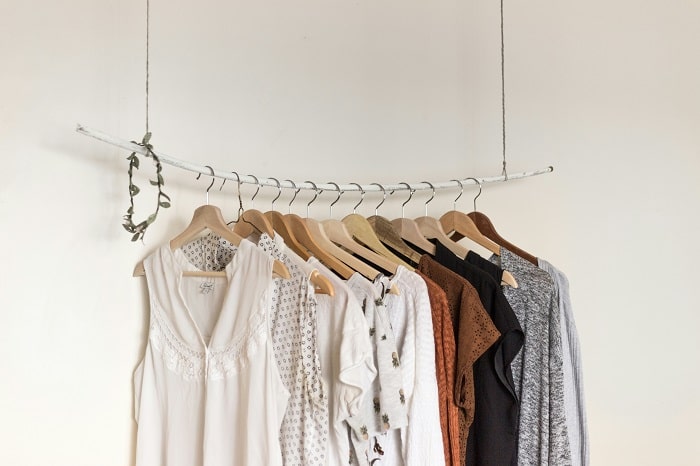The concept of a capsule wardrobe—a compact, curated collection of clothing designed to mix, match, and serve every need—has gained popularity to simplify life, reduce environmental impact, and refine personal style. However, building a capsule wardrobe isn’t as straightforward as it sounds. It comes with challenges, from deciding what to keep or discard to selecting pieces that balance versatility and self-expression. Adopting a capsule wardrobe means facing hurdles but ultimately embracing a more thoughtful approach to fashion.
What is a Capsule Wardrobe?
A capsule wardrobe is a collection of essential clothing pieces chosen to maximize versatility while minimizing quantity. This approach focuses on items that can be worn across multiple settings—work, casual, and social gatherings—so that fewer items fulfill a variety of needs. Typically, a capsule wardrobe consists of around 30–50 items, including clothing, shoes, and accessories, which can be adjusted seasonally.
Benefits of a Capsule Wardrobe
Capsule wardrobes offer several notable benefits, making them increasingly attractive in a world full of consumerism. Not only do they help reduce the environmental impact of fast fashion, but they also encourage mindful purchasing, minimize decision fatigue, and free up closet space. Many people find that having a limited wardrobe promotes creativity, as they explore new ways to combine pieces.
How a Capsule Wardrobe Boosts Creativity
Having fewer items may sound limiting, but it often inspires creativity. By working within the boundaries of a smaller wardrobe, individuals can experiment with styling, layering, and accessorizing. This approach can lead to unexpected, unique combinations that may not have been considered otherwise.
Challenges in Building a Capsule Wardrobe
Paring Down: The Biggest Capsule Wardrobe Challenge
One of the hardest parts of building a capsule wardrobe is the process of paring it down. Deciding which items to keep and which to let go of can be daunting. Often, we have emotional attachments to our clothing, making it challenging to separate what we need from what we simply like.
Emotional Attachment to Clothing
Clothing is often tied to memories, milestones, and even aspirations. Letting go of a favorite sweater or a dress worn to a significant event can feel like losing a piece of ourselves. Overcoming this attachment requires reframing how we view clothing—not as mementos but as tools for self-expression and function.
Managing Seasonal Needs
Creating a wardrobe that works across seasons can be difficult. Most capsule wardrobes are divided by season to keep them manageable. However, this division requires planning to ensure enough pieces for both cold and warm weather, which may vary significantly depending on your location.
Adapting to Lifestyle Changes
A capsule wardrobe must evolve with lifestyle changes, from job shifts to changes in personal style. A wardrobe that suits an office job may need adjustment for a work-from-home setup or a more active lifestyle.
Maintaining Personal Style with Fewer Choices
When trying to stay within a limited number of pieces, the risk of losing personal style arises. Capsule wardrobes, although functional, may feel like they don’t capture individual uniqueness. Finding ways to infuse personality, like through a carefully chosen accessory or statement piece, can help.
Balancing Practicality and Aesthetic
The balance between practicality and aesthetics can be a tightrope walk. While the wardrobe must serve daily needs, it should also reflect a sense of style. This dual requirement can make selecting versatile, stylish pieces challenging.
How to Overcome Capsule Wardrobe Challenges
Setting Goals and Intentions
Begin by setting clear goals. Ask yourself: Why do you want a capsule wardrobe? The answer will guide the process, helping you choose items that align with your values and lifestyle.
Establishing Your Color Palette
A cohesive color palette is key to a capsule wardrobe’s versatility. Select colors that complement each other and suit your skin tone, and include a few neutral tones for easy mixing and matching.
The 30-Piece Experiment
Some individuals find it helpful to try a temporary, experimental capsule. Limiting themselves to around 30 pieces over a month provides insight into their true wardrobe needs without making a long-term commitment.
Embracing Versatility in Each Piece
Choose items that offer flexibility. A simple dress that works as well at a formal dinner as it does for a casual day out is more valuable than a piece limited to one use. Invest in multifunctional pieces that complement various settings.
Shopping for Longevity and Quality
Capsule wardrobes are not about scarcity but quality. Rather than buying cheaply made items, invest in higher-quality, durable pieces that will last longer. This approach reduces the need for frequent replacements and helps keep your capsule sustainable.
Strategies for Versatile Dressing
Mastering Layering Techniques
Layering transforms pieces from season to season. A light blouse can be layered under a sweater for winter and worn alone in summer, providing year-round usability. Layering also enables new looks with the same clothing items, expanding outfit options.
Mixing and Matching Basics
Basics like neutral t-shirts, jeans, and simple jackets form the backbone of a capsule wardrobe. With a little creativity, these basics can take on different styles depending on the context.
Dressing Up and Down with Accessories
Accessories are powerful tools for versatility. A single outfit can go from casual to formal with the right accessories, making belts, jewelry, and shoes essential in a capsule wardrobe. By choosing timeless, versatile accessories, you can adapt your capsule wardrobe to different occasions.
Choosing Pieces with Multi-Season Use
Whenever possible, choose pieces that work across seasons. Light sweaters, cardigans, and neutral coats can easily transition between winter and spring, allowing you to maintain a smaller wardrobe all year long.
Building Your Capsule Wardrobe
Starting with Closet Essentials
Building a capsule wardrobe starts with identifying essentials—core items like jeans, neutral tops, and versatile outerwear. Essentials provide a strong foundation, ensuring that your wardrobe has reliable staples around which to build.
Assessing Lifestyle and Needs
Consider what your typical week looks like. For those who work from home, comfort might be a top priority, while others may need formalwear more frequently. By understanding your routine, you can select pieces that suit your lifestyle.
Evaluating Current Wardrobe for Versatile Pieces
Look at your current wardrobe and identify versatile items. These might include a classic blazer, black pants, or a solid-colored dress. Gradually phase out the less useful pieces, focusing on the ones that blend well with others.
Gradually Transitioning to a Capsule
A capsule wardrobe doesn’t have to happen overnight. Slowly introduce capsule principles by decluttering, making mindful purchases, and removing items that no longer serve a purpose. This gradual approach makes the transition feel less overwhelming.
Common Capsule Wardrobe Mistakes to Avoid
Overbuying on “Essentials”
The aim of a capsule wardrobe is simplicity, yet some people over-purchase “essentials,” thinking more is better. The key is quality over quantity, with each piece carefully selected for its usefulness.
Ignoring Personal Style
A capsule wardrobe should reflect personal style. Avoid buying items just because they’re “minimalist” if they don’t align with your taste. Style is unique to each person, and your wardrobe should feel authentic.
Sacrificing Comfort for Style
Comfort is critical to long-term satisfaction with a capsule wardrobe. Investing in comfortable, well-fitting pieces means you’ll reach for them more often.
Lack of Flexibility in Choices
A capsule wardrobe should offer flexibility. You may feel restricted if you’re stuck with items that only fit one or two scenarios. Choose pieces that adapt to a variety of outfits and occasions.
Living with a Capsule Wardrobe
How to Handle Capsule Wardrobe Fatigue
Over time, a small wardrobe can feel repetitive. Combat this by rotating accessories, layering creatively, and periodically revisiting your pieces to see if a small refresh is needed.
Tips for Maintaining Your Capsule Wardrobe
Maintenance is key for a capsule wardrobe. Regularly assess each piece’s condition, make repairs as needed, and replace worn items with higher-quality alternatives.
Adapting the Capsule Over Time
Life changes, and so should your capsule. As your needs and style evolve, don’t hesitate to adjust your wardrobe accordingly. A capsule wardrobe is most effective when it grows with you, remaining flexible and adaptable.
Conclusion
Embracing a capsule wardrobe is not just about reducing the number of pieces you own; it’s about fostering a thoughtful relationship with clothing. While capsule wardrobe challenges are real, the rewards—a more organized closet, a clearer personal style, and reduced decision fatigue—are well worth the effort.
References:

